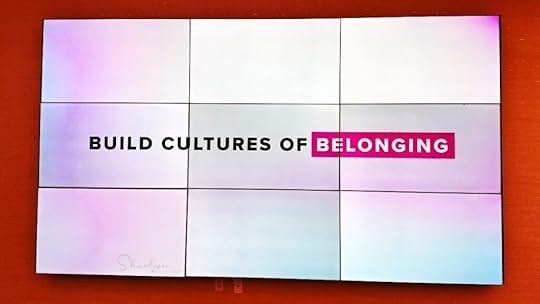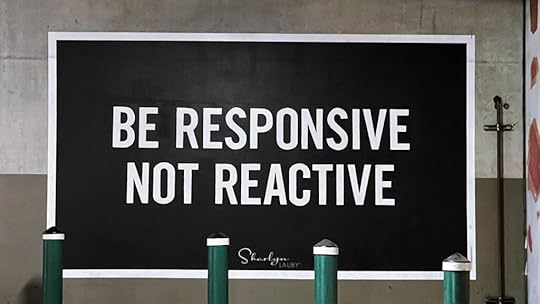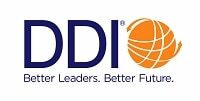Sharlyn J. Lauby's Blog, page 27
February 4, 2024
Increase Employee Engagement Using Storytelling

Estimated reading time: 5 minutes
Years ago, I heard a speaker talk about the four principles of telling great stories. They are: 1) be truthful, 2) stay positive, 3) be succinct, and 4) show growth. I try to remember them every time I’m telling a story.
Storytelling is a great way to share experiences, convey information, and demonstrate values. As I was thinking of storytelling and these principles, it reminded me that we can use stories to engage employees. The principles of engagement are based upon truth, positivity, effectiveness, efficiency, and a desire to move forward. So the two concepts are very much aligned.
The reason I wanted to mention storytelling and engagement today is because I recently got my hands on two books focused on stories. The first one is called “Unsung Heroes: The Untold Story of HR” by our friends Alex Alonso and Nancy Woolever at the Society for Human Resource Management (SHRM) and “HR Like a Boss: Your Guide to Amazingly Awesome HR” by John Bernatovicz. Now you might be saying, “Hey! I thought we were talking about employee engagement. These sound like HR books.” Yes, they’re HR books. And HR professionals are employees. Sometimes we forget that we need engagement too.
I thought both books do a great job of sharing stories to demonstrate the value of storytelling. So I wanted to outline the five types of stories you can use to create engagement (with examples).
Stories about the organization’s history. SHRM’s “Unsung Heroes” book is a celebration of the 75th Anniversary of the organization. One of the sections in the book is dedicated to insights from former SHRM leaders and board leaders. It was great to see their insights today against the backdrop of their history with the organization.
As human resources professionals, not only should we know about the history of our profession, but we should also know the history of the place we work. Years ago, I worked for an airline and one of the first stories employees heard was about the founder. He was the guy “who sold you the ticket, put your bags on the plane, and then flew the plane.” We told the story during recruiting fairs, in orientation, etc. The story not only gave you a history lesson but it told you something about the company’s founding principles and values.
Stories explaining how decisions are made. Speaking of founding principles and values, I enjoyed the chapter in Bernatovicz’s “HR Like a Boss” titled “What do bosses care about?”. Yes, it talks about data, numbers, and profits. But it also talks about emotional intelligence. They are not mutually exclusive.
For example, the same airline I mentioned above was looking to save some serious expenses. So instead of just cutting the budget, they went to employees and explained the situation. The organization created a suggestion contest that financially rewarded employees for developing ideas that either increased revenue or reduced expenses. The result positively impacted the organization in the millions and employees were a part of the solution.
Stories about employees delivering exceptional service. One of the stories in the “Unsung Heroes” book is about an employee who gets into a car accident. The HR department talks to the employee’s family about their benefits because the employee is incapacitated. They go the extra mile to make sure that the employee is focused on their recovery, not fighting with insurance companies. And when that employee was ready to return to work, they created a job for them, which ultimately led to a position in human resources.
The ”employee” in this story … is me. I was so fortunate to work for a company that had a fantastic HR department that cared. A lot of organizations say they’re employee centric but don’t show it when times are tough. This company did and I won’t forget it.
Stories about how employees interact with each other. Relationship building is a key competency for human resources professionals. This storytelling is important because it helps us communicate information and sell our ideas. In “HR Like a Boss”, Bernatovicz spends some time talking about superficial relationship building and the need to do better. I really thought his take on being “more quality and less quantity” was spot on.
Candidates and employees immediately notice relationships – both the good and not so good. For instance, most of the organizations I’ve worked for have used some form of collaborative hiring, where teams were formed to strategize and recruit. One of the things I’ve learned is that people immediately sense if the recruiting team is truly a team. They can tell by the way the team members interact and by the stories they share about the organization.
Stories about what the future holds. I grew up in Orlando, Florida during the time that Walt Disney World was being built. There used to be a television show called “The Wonderful World of Disney” where Walt Disney himself would share with viewers a sneak peek into the construction of Walt Disney World. I remember watching him explain EPCOT for the first time. Organizations today have a powerful way to share their stories directly with consumers using mobile, social media, and video.
While none of us know exactly what the future looks like, we do have hopes, dreams, and expectations. There are several stories in “Unsung Heroes” from people who were following their passion and found it. There’s a chapter in “HR Like a Boss” about becoming a force of nature. The point is these types of stories tell candidates, employees, and even customers who we are. They allow people to see what the company is really all about. They create a sense of organizational “community.” And they create engagement.
P.S. You can pick up copies of “Unsung Heroes: The Untold Story of HR” by Alex Alonso and Nancy Woolever and “HR Like a Boss: Your Guide to Amazingly Awesome HR” by John Bernatovicz either on the SHRM Store website or via Amazon.
The post Increase Employee Engagement Using Storytelling appeared first on hr bartender.
February 1, 2024
Bookmark This! The Office Space Edition

Estimated reading time: 4 minutes
Remember the 1999 movie “Office Space”? It featured several famous actors including Jennifer Aniston, Gary Cole, Ron Livingston, and Stephen Root. The movie has become a cult classic and is the subject of many internet memes.
The reason I’m mentioning “Office Space” (the movie) is because office space (the space) remains a hot topic today. Even if we’re not talking about onsite / hybrid / remote work, employees want to work someplace nice. Seriously, if an employee is spending 8 hours a day someplace – that’s one third of their day – it should be nice.
So, I wanted to put together a roundup of articles focused on office space. If you’re trying to find ways to make the office environment more inviting, these might be helpful.
Your Office Space Should Be Determined by Your Work (Not Your Pay Status)
As the business world changes, we must challenge our thought processes. A decade ago, maybe it was okay to assign office space by pay status. Today, maybe we have to revisit that idea. Our job as HR professionals is to help the organization realize that changes need to be made and facilitate a conversation about the best options for the company.
How to Design Your Company’s Flexible Workspace Plan
I don’t believe there’s any doubt – employees want flexible work if they can get it. Granted, not every job is able to offer flexibility. For example, the barista at your local coffeehouse isn’t going to be able to work from home. But there are many positions that can and do work outside of a traditional office environment. The question for human resources professionals is, “What’s the best workspace setup?”
Open Office Spaces: How to Be Productive and Effectively Collaborate
Nearly 70% of offices have open layouts that are characterized by areas with no partitions and cubicles with low or high partitions, according to the International Facility Management Association. However, there’s some question about the effectiveness of open office space. And no one wants to work in an unproductive office.
The Envy Office: Can Instagrammable Design Lure Young Workers Back?
I know this New York Times article got some pushback when it first came out, but I believe there’s a point in the piece. Organizations don’t have to decorate in what might be considered bold colors, but they do need to remember that places that are aesthetically pleasing can be fun and bring out creativity.
As Office Workers Make Their Return, So Does the Lowly Cubicle
One of the best things about having an “office” is being able to make it your own with plants, pictures, etc. I know some office environments discourage personalizing your space, but maybe this New York Times article will offer some reasons for letting employees make their cubicles more reflective of themselves.
Maybe Third Spaces Are the New Remote Workplaces
Third Spaces are being described as places where we can blend work and wellness. A Third Space can also be an option for organizations that are committed to allowing employees to work remotely. There will still be times when you want the team to get together. And it’s possible there’s not enough onsite space to host everyone.
There’s no one right way to design office space. Organizations should consider:
How much space is available?How many employees will be using the space?What type of work needs to be done? Are there any safety considerations? What’s the company culture?Regardless of the whole onsite / hybrid / remote conversation going on, organizations need to have functional office space for their employees. The office space needs to be nice enough to keep employees wanting to come back because that’s what will create the right environment for the work to get done.
Image captured by Sharlyn Lauby while exploring the streets of Nashville, TN
The post Bookmark This! The Office Space Edition appeared first on hr bartender.
January 30, 2024
Be Brave, Be Yourself, and Build Trust Around You

Estimated reading time: 5 minutes
(Editor’s Note: Today’s article is brought to you by our friends at UKG , a leading provider of HR, payroll, workforce management, and culture solutions. services. Congrats to them and enjoy the article!)
A few months ago, I shared with you an article about “Turning Your Mistakes into Marvelous Things”. It’s about a very famous tea called Soderblandning that started out as a mistake. Today, I wanted to tell you a story about a different mistake. This one I made … intentionally.
Regular readers of HR Bartender know I’m a planner. So, my annual planner purchase is a pretty big deal for me. This year, I decided to do something completely new and different and purchased a Hobonichi Techo. I’m using it to bring my planning, journaling, and commonplace book into a single place.
When it arrived, I decided to join some online groups to get usage ideas and one of the conversations that kept coming up was “What if I make a mistake? Then it will be ruined, and I’ll have to buy another planner”. I can totally relate to the concept of perfectionism, so I went to a page in the planner, and I deliberately made a mistake on one of the pages. And let me tell you “Whew! I am so glad that’s over.” Now I can focus on moving forward with all the good stuff.
The reason I’m sharing this story is because sometimes we don’t do things because we’re afraid of making a mistake. It happens on an individual level, within teams, and throughout organizations. Our friends at UKG are hosting an event “Imperfections and All: One on one with Glennon Doyle & Pat Wadors” on Thursday, February 29, 2024 at 1p Eastern. I think it’s going to be a great conversation.
Glennon Doyle is the author of The New York Times bestseller “Untamed” and host of the podcast “We Can Do Hard Things”. She is also the founder of Together Rising, an all-women led nonprofit that has raised over $50 million for women, families, and children in crisis.
And you already know UKG’s CHRO Pat Wadors. I spoke with Pat in Season 2 of The HR Bartender Show talking about change management. If you haven’t listened to the episode, I hope you’ll check it out.
One of the things I discovered when reviewing the about page on Glennon’s website, was a quote that I like. “The braver we are, the luckier we get.” It reminded me of the mistake stories I shared at the beginning of today’s article.
We need to get brave and not let the fear of mistakes hold us back. But that also means that we need to trust ourselves to navigate the environment we’re in. That’s at every level.
At the organization level, we need to feel like we can be ourselves at work.
Organizations should make honesty and psychological safety a priority and part of the culture. When high levels of psychological safety exist, employees will feel that they can offer honest feedback. And that honest feedback can make the organization better.
Organizations can build trust by regularly conducting employee surveys and focus groups. And employees can build trust by participating in them.
At the team level, managers and supervisors should encourage employees to be themselves.
Teams excel when we bring our unique strengths to work. Employees who feel there’s trust within the team will feel comfortable speaking up.
Organizations can offer team building and team development training to new and existing teams. These experiences allow team members to start building trust and learn how to work through problems and deliver feedback.
At the individual level, we need to trust ourselves and send the message that we’re trustworthy.
We can’t forget ourselves in the trust conversation. As organizations and teams work to build trust, we have to be prepared to participate. In addition, we must demonstrate that we’re trustworthy with the organization and the teams we are a part of.
I’m looking forward to the unscripted conversation between Pat Wadors and Glennon Doyle on leading with your values and building trust in life, at work, and everywhere in between. It’s free so be sure to sign up. And if you’re already booked that day, sign up anyway so you can get the recording which will be made available on-demand until March 29, 2024. Oh, and in case you’re wondering, the event has been pre-certified for SHRM and HRCI professional development credits.

Trust is at the center of business and personal success. We buy from companies we trust. We work with people we trust. And we make personal decisions based on trust. But trust also means being able to say things like “I don’t know.”, “I need help.”, and “I made a mistake.” These statements don’t label us a failure. I don’t believe that anyone is looking for the people or organizations they interact with to be perfect. I do believe they’re looking for them to be honest. Because that’s what builds trust.
The post Be Brave, Be Yourself, and Build Trust Around You appeared first on hr bartender.
January 28, 2024
When an Employee is Threatened at Work – Ask #hr bartender

Estimated reading time: 7 minutes
Today’s article is a very serious one. I received a note from a person who said that their manager had threatened them with physical harm. I’m not going to share the note because honestly, I’m not completely sure if it’s legit. Part of me says that the last person you would reach out to if you were threatened is the writer of a human resources blog.
That being said, the person’s note did remind me that employees do receive threats. So, I wanted to see if we could chat about what employees should do if they receive a threat in the course of doing their job.
To offer some insights, I asked employment attorney Donna Ballman to share her expertise. She has helped us in the past and our interview on workplace retaliation is one of my favorites. Donna’s work focuses on employee-side employment law issues, so whether you’re an employee or an employer, these insights will prove to be valuable.
Please remember that Donna’s comments should not be construed as legal advice or as pertaining to any specific factual situations. If you have detailed questions, they should be addressed directly with your friendly neighborhood employment law and labor attorney.
Donna, thanks so much for helping us today. Before we talk about threats, I wanted to ask if there is a difference between workplace bullying and threats?
[Ballman] Well, yes and no. Workplace bullying is not generally illegal. Threats of physical harm could be a crime, obviously depending on the context and content of the threat. Workplace bullying is only illegal if the person is being targeted due to a legally protected category, such as race, age, sex, national origin, disability, etc., or things like blowing the whistle on illegal activity or a worker’s compensation claim.
Thanks for the clarification. Let’s specifically talk about threats. If an employee receives a threat during work, what should they do?

[Ballman] If it’s a real threat and they feel that they are about to be harmed, call 911. However, I’ve run into many employees who were fired for calling 911. Firing someone for calling 911 is not illegal in my state (Florida), but there may be legal protections in some states.
Don’t just leave the premises. They can definitely fire you for that. Unless the police or 911 tell you to leave, stay until someone in management tells you to go.
If the employee doesn’t feel that there’s an immediate risk of harm, I’d say report it in writing to HR and/or someone in management. Make note of the exact quote as much as possible, any witnesses, and the context. Obviously don’t engage in any arguments or physical altercations with the person making the threat.
When it comes to threats, does it matter who initiated the threat (meaning a customer versus a co-worker / manager)?
[Ballman] Of course it does! The company is almost certainly going to be more protective of a customer than an employee. If it’s a customer, reporting it to a manager who is on duty makes sense if it’s not a 911 situation. If it’s a coworker, then the manager similarly may well be the person to contact. If it’s the manager, then you’d have to notify someone above them or HR.
Speaking of contacting HR, do employees have an obligation to tell the company versus let’s say going directly to law enforcement?
[Ballman] While ‘obligation’ may be a strong word, they certainly should notify the company. Once the company is on notice that someone has a propensity to violent behavior, they have additional potential liability if the person acts on the threat.
Does the situation change if an employee receives a threat outside of work hours, but it’s work related? For example, if someone receives a threat via text after work hours.
[Ballman] At least it would be in writing, so there’s proof. Verbal threats can be difficult to prove, but a written threat is hard for the company to ignore. My advice would be the same though. I’d add don’t refuse to go to work. They can fire you for that. Once you report it, they have a duty to keep a safe workplace.
Moving away from threats for a moment. If an employee hasn’t received a threat, but they are concerned about the behavior of a co-worker (maybe there have been some remarks or rudeness), should an employee consider reporting that to the organization?
[Ballman] Bullying is not illegal. However, bullies tend to pick on people who may fit within protected categories. If you complain, you’ll want to complain in a way that is legally protected against retaliation. What I hear way too much of is, ‘I was harassed, so I quit, and then I told them why.’ This is a frequent mistake.
The United States Supreme Court says that, where an employer has a published sexual harassment/discriminatory harassment policy, the employee must report it under that policy and give the employer the opportunity to fix the situation. If you did not avail yourself of the employer’s policy before quitting, you are giving up your right to sue for a violation.
Once you report, appropriate remedies may be to discipline or warn the harasser, to move the harasser, under some circumstances to move the victim, to do training, or in extreme cases, to terminate the harasser. But they don’t have to take any action at all. They only have a duty to maintain a safe workplace. You might still have to work with the harasser.
Before you write the long letter airing all your grievances against your boss, you may want to have an attorney look at it, or just make sure you are addressing your protected status. If you do complain, put it in writing and call it, “FORMAL COMPLAINT OF SEXUAL HARASSMENT,” or “FORMAL COMPLAINT OF RELIGIOUS HARASSMENT” or whatever category you fit into. Set forth the harassment due to your protected status and be businesslike.
This is not the time to air all your complaints about the business or your boss, only to air the specific complaint about the illegal behavior. If you are harassed or are in a hostile work environment, make sure you understand your rights and responsibilities. Report it to the employer and give them a chance to address the situation. If they allow the harassment to continue, or if they retaliate, contact an attorney to discuss your legal options.
Last question and this is more for organizations. What can companies do to send the message that they will not tolerate bullying or threats in the workplace?
[Ballman] Bullies are a huge drain on corporate time and assets. Employers should adopt zero tolerance policies regarding bullies. Employers will usually take accusations of this type of conduct seriously. Once they are on notice, they will be held liable if they allow it to continue, and they know it. And most employers know that this behavior is disruptive, has nothing to do with making money, and can adversely affect morale.
Even if the employer takes no action, by reporting it, you have put the company on notice that this behavior is occurring. The employer will have no excuse when the harasser does it to the next employee. And in some cases, you may have a remedy.
A huge thanks to Donna for sharing her knowledge with us. Be sure to check out Donna’s blog “Screw You Guys, I’m Going Home”. She also has a great book out titled “Stand Up for Yourself Without Getting Fired”.
I don’t believe it’s unrealistic to say that there will be times when we disagree with people at work. But that shouldn’t escalate to bullying or threats. If you feel that you’re being bullied or treated inappropriately, please do something: review your company policies and notify the organization.
Image captured by Sharlyn Lauby while exploring the streets of Gainesville, FL
The post When an Employee is Threatened at Work – Ask #hr bartender appeared first on hr bartender.
January 25, 2024
Make a Promise to Conduct Better Meetings In the Year Ahead

Estimated reading time: 4 minutes
I came across an article recently on CNBC that said 90% of companies plan to implement return to the office policies by the end of 2024. This isn’t surprising. Organizations have been talking about return to the office policies mandates for quite some time. That’s not what I want to talk about today.
I want to talk about meetings. Because one of the things that happens when everyone comes back to the office will be in-person meetings. And dare I say that one of the things that employees are not looking forward to when they return to the office are these meetings. The reason being that many organizations don’t do them well.
Employees don’t mind going to a meeting that’s productive. The key word here being productive. My first book was on the topic of meetings. It’s titled “Essential Meeting Blueprints for Managers”. So, I thought it might be a good idea to review some tips for conducting a good meeting.
Have meetings for the right reasons. I believe there are only three reasons to have a meeting: 1) convey information, identify problems, and make decisions. Some people schedule meetings for things that could easily be communicated via email or a phone call. This is probably the biggest reason that meetings are ineffective – they’re scheduled for the wrong reason. Include the right people. Meetings are not popularity contests. Invite the people who need to be there and don’t invite the people who don’t. Yes, this does mean that the naysayers and people who enjoy playing “Devil’s Advocate” might need to attend. Sorry but, if the right people aren’t there to participate, the outcomes of the meeting will be questioned. Schedule meetings at the right date and time. Speaking of inviting the right people, it’s important to understand when to conduct meetings. I’ve seen people intentionally schedule meetings knowing that someone they didn’t want to be there would not be able to attend. And meetings should be scheduled so they don’t conflict with key times in the operation. Create and distribute an agenda. And do it before the meeting. Even for standing meetings, it’s helpful to have an agenda. Meeting participants can come prepared to discuss items. It’s also helpful to keep the meeting on track and on time. As a general rule, people love it when a meeting ends early but they do not love it when it runs late. And should someone want to bring up a new topic, the agenda can determine if you have time, or it should be considered for the next meeting. If you expect others to present information, tell them in advance. This is part of the conversation about agendas. It is disrespectful to throw someone off guard and ask them to present data, proposals, etc. with no warning. Tell meeting participants in advance if they need to do something. Use the proper platform. In today’s technology age, we have options when it comes to meetings. We can meet in person or online. Some meetings – because of their content – would be better in person. If a person is being asked to present something, make sure they have the tools they need. Keep minutes. Every meeting should have some sort of documentation about what was discussed and any decisions that were made. Find someone who can take this responsibility and ask them (before the meeting!) if they could help. Personally, I’m a fan of using SMART for meeting minutes. It provides a record of what will be done, who is responsible, and the timeline for completion.Follow-up. The purpose of a meeting is to get stuff done. Distributing minutes in a timely fashion after the meeting lets everyone know their responsibilities. It allows people to stay focused. And it allows the meeting leader to follow-up to make sure the work is getting done. And if anyone has questions or challenges along the way, it can be discussed and addressed effectively.Meetings are an important part of business. The information discussed helps us do our jobs better, which ultimately helps the organization perform better. I know we like to joke about meetings, but we can’t let that keep us from trying to improve them.
Whether your organization operates in the office, remotely, or some hybrid version, meetings matter. It might be a good idea to review how to conduct a good meeting … and then hold people to it.
The post Make a Promise to Conduct Better Meetings In the Year Ahead appeared first on hr bartender.
January 23, 2024
3 Proven Ways to Make New Team Members Feel Welcome and Included

Estimated reading time: 6 minutes
(Editor’s Note: Today’s article is brought to you by our friends at DDI, a global leadership firm that helps organizations hire, promote, and develop exceptional leaders. They were recently named a Training Magazine’s Network Choice Awards winner in the areas of leadership development and assessment. Congrats to them and enjoy the read!)
At the start of every year, I love reading the “What’s In/Out” lists and 2024 was no exception. In fact, this year was fascinating because generating an in/out list seems to have been the cool thing to do. It was fun reading what others were declaring as “in” (i.e., cobalt blue, reading books in public, and embracing the word dorky) and “out” (i.e., chartreuse, wire hangers, and getting less than 7 hours of sleep a night).
While I didn’t create a list, I do want to share something that I believe will be “in” for 2024 – Teams. Teamwork. Team building. Team development. 2024 will be all about teams and optimizing team performance. And the key to creating high-performing teams starts with making team members feel welcome and included.
Making new hires feel welcomed and included should begin at the candidate stage and continue during orientation and onboarding. In fact, some organizations have new hire buddy programs to help with the process.
Today, I wanted to talk about how organizations help an employee who gets promoted, transfers, makes a lateral move, or even takes a step back feel welcome and a part of their new team. Unfortunately, I think there’s an assumption that because someone is already a part of the company the extra effort isn’t necessary. Which is simply not true.
When I worked for the airline, I transferred from the southern division to the northern (headquarters) division. Yes, I knew the company – but the office environment was completely different. And yes, I knew my colleagues, but I had never spent all day, several days in a row with them. Our interactions were primarily limited to meetings. The reverse is also true – they had never spent all day with me. Please note: I’m not saying we didn’t get along, but it’s fair to say there was an adjustment period. Not to mention some inside jokes that I had no clue about.
3 Ways to Make Team Members Feel Welcome and IncludedSo, what can organizations do to help new internal team members feel welcome and included? Here are three activities to consider.
(1) Define the internal candidate experience. Organizations spend time defining the external candidate experience. Have we given thought to the internal one? For instance, we regularly communicate with new hires through the orientation and onboarding experience. Organizations want new employees to know that they’re being set up for success. Don’t forget to do the same when someone is getting promoted, transferring, making a lateral move, and yes, even when they are taking a step back. An ideal time to talk about how the transition will work is during the internal interview.
To start defining the internal candidate experience, the organization can do a traditional gap analysis. One reason to consider treating the internal and external candidate experiences differently is because it’s possible that the internal candidate experience might look a little different from the external candidate experience. And that’s okay.
(2) Train managers on the skills needed to foster an inclusive work environment. Managers play a huge role in making someone new feel welcome and included. I also understand that managers are very busy. They might not intentionally ignore someone, but they could get distracted and forget. That’s not an excuse. It’s a reality that we need to help them with.
I’ve mentioned before LinkedIn’s “Onboarding in a Box” document. Basically, it’s a booklet of checklists to remind ourselves of everything we need to do when we have a new hire. I particularly like the one titled “How to be the Best Boss Ever”. Checklists are great – especially when we have a lot on our plate. They help maintain consistency. But checklists alone don’t create high performance. Organizations need to offer training in effective communications like conducting meetings, delivering feedback, managing conflict, and coaching for performance. The combination of checklist (i.e., what to do) and training (i.e., how to do it) is a perfect way to give managers the tools they need.

(3) Conduct internal mobility check-ins. Organizations often do check-in surveys with new hires to make sure that everything is going okay. Check-ins can be done in-person like during a one-on-one meeting with the boss or conducted electronically. The goal is to make sure new hires feel that the promises made to them during the interview are happening as part of the employee experience.
Organizations should be doing the same for internal moves. We can’t assume that, because someone just got promoted or transferred, the thought won’t cross their mind that, “This move was the worst thing I’ve ever done for my career.” An employee might decide they want to move back to their old job OR, depending on the situation, decide they need to leave the organization completely.
According to a survey published by Entrepreneur.com, less than 40% of employees want to move into management positions. The article cites reasons like workload, burnout, and being perceived as untrustworthy. I’m mentioning this article and statistic because often organizations look at their current employees for future opportunities. It’s great when organizations can support employees’ career goals by giving them the opportunities they want. However, if the perception is it’s better to leave because the organization’s internal employee transition experience … well, it’s just bad. This not only hurts employees, but it hurts the organization.
Welcome All New Team Members – Both Internal and ExternalThere are countless studies showing that structured onboarding programs not only welcome new hires into the organization, but they help with employee engagement and retention.
If you want more leadership insights related to building inclusive teams, developing skills, the latest business trends, and more, check out the Leadership 480 podcast from DDI. The episode on “How to Build Inclusive Teams” features Quiana Hayes-Perciavalle, director of program management operations at ConnectiveRx, Alyia Gaskins, founder of CitiesRX, and Sarah Haidar, an industrial psychologist.
It’s time to take what we know one step further and provide internal team members the same type of structured onboarding process that we provide external candidates. It doesn’t necessarily have to include an in-person classroom program, although that could be fantastic. But it does need to include a plan, communication, training, and manager involvement.
The post 3 Proven Ways to Make New Team Members Feel Welcome and Included appeared first on hr bartender.
January 21, 2024
Organizations Need to Balance Speed and Effectiveness

Estimated reading time: 3 minutes
Technology is a great thing. It’s also constantly changing and, for effectiveness, we have to stay current with what’s happening. And by “we”, I mean both individuals and organizations. For example, I’ve been seeing articles about Q-day, which is a term used to describe when quantum computers will be able to crack all of the codes currently protecting digital data. Some people are predicting that Q-day could happen as early as 2025.
Today’s article isn’t about Q-day, although we might want to pay attention to that. Today, I wanted to talk about the speed of change, specifically when it comes to technology. Organizations and individuals need to learn not only how to manage change but how to manage it quickly and effectively.
For example, I read an article on Fast Company recently that referenced a survey called Cisco’s Artificial Intelligence (AI) Readiness Index. Here are a few statistics from the article:
97% of respondents said it’s urgent to start using AI95% of respondents said they have an AI strategy in place82% said their boards and leadership teams are receptive to AI68% said their employees are receptive to AI14% said they’re fully prepared to make the transitionI think these numbers tell an interesting story about change and adoption of change. Even if the numbers are off (whether that’s a little or a lot), there’s something to be learned here about change, organizational effectiveness, and the need to get change efforts right.
Getting people onboard is priority number one. Change is hard. Even when we want the change, it’s hard. So, getting people to buy-into doing the work and dealing with the challenge should be step one. For example, when it comes to AI, it’s about getting boards, leadership teams, and employees all involved in the conversation. If boards and leadership teams embrace the change and employees do not … there will be resistance, which doesn’t help anyone.
Once people buy-in, develop a strategy that everyone can live with. Please note: I didn’t say develop a strategy that everyone will love. I also didn’t say that everyone had to like it. But organizations and individuals should be able to commit to living with it. If they don’t, they could potentially undermine the strategy and its effectiveness behind the scenes. Remember, change is hard. If you’re dealing with a fast-moving new technology like artificial intelligence, you want everyone to say they can commit to the strategy.
Learn how to execute well. It’s sad to say but sometimes organizations do a great job of creating policies, procedures, and strategies and a terrible job of executing them. One of my must-have business books is “Execution: The Disciple of Getting Things Done” by Larry Bossidy and Ram Charan. Once the strategy is in place and people are committed to it, they need to be given the tools to effectively get it done. That includes training as well as management support.
Artificial intelligence is just one example of the changes that organizations and individuals face. But it’s a great example of how important balancing speed and effectiveness should be. If we don’t start thinking about how do to them both well, organizations could be considered a sloppy early adopter OR a laggard in their industry.
Get buy-in at every level. Create strategies with your key stakeholders. Execute your strategy quickly, effectively, and efficiently.
Banksy image captured by Sharlyn Lauby while exploring the streets of Atlanta, GA
The post Organizations Need to Balance Speed and Effectiveness appeared first on hr bartender.
January 18, 2024
Health Equity Has a Direct Impact On the Organization

Estimated reading time: 3 minutes
Last year, I published an article stating “There’s More to Equity than Just Pay Equity”. The article talked about health equity, which is defined as the state in which every person has a fair and just opportunity to attain their highest level of health.
The article also mentioned a Health Equity in the Workplace Initiative, a collaboration between the Society for Human Resource Management (SHRM), the American Heart Association, and the Deloitte Heath Equity Institute. The first report from the group was released recently and I wanted to share some of the findings. You can download the full report on the American Heart Association website.
Some organizations might say to themselves, “We offer all our employees health insurance. Isn’t that health equity?”. Sadly, it’s not. The report shared several examples of health inequities:
People with disabilities are two times more likely to develop health conditions including depression, diabetes, and stroke.Asian Americans are at the highest risk of developing chronic health conditions including heart disease, stroke, diabetes, and cancer.Women are 20% more likely to develop heart failure or die within five years after their first severe heart attack compared to men.Life expectancy for white people is about five years longer than it is for Black people.Health inequities account for approximately $320 billion in annual U.S. health care spending, according to Deloitte. And if left unaddressed, the cost could reach $1 trillion by 2040. I don’t have to say it … but I’ll do it anyway … when an employee’s health suffers, it has an impact on their performance and productivity, which ultimately has an impact on the organization’s bottom line.
Making health equity a priority should be a part of every organization’s talent strategy.
Now you might be saying to yourself, “Okay, I get it. This needs to be a priority. What should organizations do?” It’s a valid question. One of the things I liked about the report was their acknowledgement that health equity solutions involve organizations, individuals, and communities.
Organizations need to make sure that they provide health care benefits and a safe work environment. They also need to educate employees on how to work safely as well as on how their benefits work.
Individuals need to take the time to learn about their health care benefits and how they work. If they have questions, ask someone in human resources. Attend open enrollment meetings.
Both individuals and organizations need to hold community leaders accountable for providing health care literacy and services to the community.
The report includes actionable steps that employers can take to ensure they are making health equity a priority as well as steps for monitoring and measuring results.
The health of our employees is both a moral and business imperative. We want to be healthy. We want the people around us to enjoy good health as well. When people are healthy, they can bring their best selves to work. This contributes to business performance and profits. Health equity is the key to healthy employees.
Image capture by Sharlyn Lauby while exploring the streets of Orlando, FL
The post Health Equity Has a Direct Impact On the Organization appeared first on hr bartender.
January 16, 2024
10 Activities to Help Improve Your Business Acumen

Estimated reading time: 6 minutes
At the beginning of a new year comes a list of things we want to improve or work on. I don’t want to use the word resolutions. Think of it more as refocusing on activities we should be doing more often. And with all of the talk about returning to the workplace, it should be no surprise that we need to understand the business. In fact, as I’m typing this, it’s not just understand the business but be able to talk about it and make decisions related to the business.
One of the behavioral competencies in the Society for Human Resource Management (SHRM) competency model is business acumen. But honestly, it can be challenging to develop business acumen. The business world is constantly changing. Oh sure, a lot of people throw buzzwords around like “hush trips” and “coffee badging” but do they really know what those terms mean?
It’s a challenge to stay current, especially when your plate is already full of work. To keep up on what’s happening in the business world, I find it helpful to occasionally take inventory of the activities that I’m doing. It reminds me to step back and just get focused. So, here’s my list of suggestions for building business acumen.
Learn how your organization makes and spends money. Years ago, as part of my company onboarding, I had to schedule a meeting with the CFO to review the profit and loss statement. It was one of the best learning activities I’ve ever done. Not because I didn’t know how to read the P&L, but because I learned how the CFO read the P&L. The good thing is there’s no rule that you’re only allowed to do it once. If you’ve never done this before, consider doing it this year. Maybe even do it again right before budget time. Know your customer. When I talk about customer here, I’m not referring to employees. Do you know who the top ten customers are for your organization? Not just their names, but do you know what they do? One of my past employers asked me to go with the sales team on regular customer calls. Super valuable! If you’ve never done it, consider asking a sales manager if you can. You’ll learn a few things and I’d bet the sales department will be happy you did. Step out of your regular responsibilities. I realize everyone is busy, but the next time your boss is looking for a volunteer, consider raising your hand. Getting involved in special projects can help you 1) learn new knowledge and skills 2) build new working relationships and 3) get noticed by the organization. Special assignments might be worth it from both a learning perspective and your long-term career development. See if you can find some extra time to make it happen.Expand your business book library. I’d like to think that everyone has a library – big or small – of books they use on a regular basis. Maybe it’s time to expand it. Ask a handful of people for some business book recommendations. And when you’re thinking about who to ask, consider a diverse group of people who might not always think the way you do. Read and/or listen to the right stuff. Trust me, I hate junk emails as much as the next person, but there are some electronic newsletters that provide great up to date information in a concise format. For example, Morning Brew continues to deliver the business headlines of the day in a casual, conversational tone. Business acumen doesn’t have to be boring or stuffy to be effective. P.S. Morning Brew also offers a newsletter exclusively focused on HR topics if you’re interested. Join your professional association. The decision on which professional organization(s) to join belongs to you and everyone needs to figure that out on their own. But I do believe it’s valuable to be a member of a professional organization. Let me add that I feel it’s important for individuals to volunteer. Not only will you make lifelong friends, but you will learn from your colleagues. Part of developing business acumen includes developing both an online and an offline professional network.Pick a topic you know nothing about … and learn. I mentioned at the beginning of this article that the business world is constantly changing. One example of that is artificial intelligence. We don’t need to become experts at everything. But picking a topic and learning more will help us ask better questions in the future. It will also help us form an opinion about new things shaping our workplaces.Learn a new technology. Speaking of technology, given that our use of technology keeps expanding, it makes sense to learn something new about today’s tech. It doesn’t have to be a big software program. Maybe it’s an app you’ve been wanting to carve out some time to test drive. Since I do a lot of remote work, I’ve been focused on learning more about cybersecurity. Take a massive open online course (MOOC). As you’re thinking about learning a new subject, also consider how you want to learn. Many major universities offer free online courses called MOOCs. Two popular ones are Coursera and edX. I try to take at least one MOOC a year. A few years ago, I took one from MIT on “Shaping the Future of Work”. Taking the course not only exposed me to new topics, but the online chats offer insight into different views from all over the world. It’s a great way to gain a global perspective. Identify a self-care activity that works for you. You might be saying, “What does this have to do with learning business acumen?” The answer is a lot. Try to infuse some fun in the activities I’ve listed. Recognize and reward your accomplishments. Take time for yourself. You will learn more and perform better after you figure out the best way to take care of yourself.I’ve come to realize that business acumen isn’t something you learn once and you’re done. That’s why periodically reviewing a list like this could be helpful. It can keep us focused.
Business acumen is changing all the time. Yes, it’s true that terms like profit and EBDITA haven’t changed. We have new terms like table stakes, strawman, customer centricity. If you want to be a contributor and partner to the business, then you must know how to continuously gain exposure to new business concepts and ideas.
Image captured by Sharlyn Lauby while exploring the streets of Atlanta, GA
The post 10 Activities to Help Improve Your Business Acumen appeared first on hr bartender.
January 14, 2024
Proven Processes Lead to Good Organizational Outcomes

Estimated reading time: 5 minutes
Someone recently asked me about a project that I worked on during my career that I was particularly proud of. My answer was a project that I worked on as a consultant. The company was convinced that they had a training problem and brought in a team of consultants to “fix” the problem.
The situation was interesting because there was this room full of consultants and we all had to learn how to work together. But one thing we were all committed to was doing a proper assessment of the situation. In doing so, we discovered that the problem wasn’t training. It was employee scheduling. This changed the entire scope of work but thankfully, it saved the company a lot of money and their challenge was assessed and solved correctly.
This story was also a reminder to me that if organizations use good processes, it will result in good outcomes. Please note I didn’t say that you would get the outcome you expected or maybe even wanted. But a proven process, when administered correctly, can point you in the right direction. Neil deGrasse Tyson mentioned the same thing in his MasterClass on Scientific Thinking and Communication “What You Know is Not as Important as How You Think”.
Now is a great time for organizations to look at their processes to make sure that they’re using proven models and that employees know how to use them as well.
Organizations should be very focused on what makes them stand out from their competition. It seems to me that’s the uniqueness factor. If a company says, “We do what everyone else does and we do it exactly the same as everyone else.” well, that’s not really a compelling argument to buy your product or service. Now could be a perfect time to discuss what makes the company unique and then ensure there are systems in place to support it.
HR Departments Need to Prepare for Delivering Value
The business world is constantly changing. But we can evaluate our situation, acknowledge our strengths, address our challenges, and develop a plan. The more prepared we are, the better we can react to the changing needs of the organization. And the better we can be at delivering value.
How To Calculate Return on Investment
Return on investment is an important business calculation. It can help organizations make good decisions and it can help organizations measure the results of decisions they’ve made. But the value in ROI isn’t in just calculating the number. It’s in making sure you calculate the number completely. Using the right information. Because that allows the organization to gain the proper insights.
How to Evaluate Your Employee Value Proposition
Regardless of what your organization is doing right now from a recruiting perspective, the organization’s employment brand is important. Which means the employee value proposition is important. Now could be a perfect time to see how your EVP looks in a quadrant model. Ensure you have a balanced offering of components that will be attractive to candidates in the short-term and to career-focused employees in the long-term.
Organizations: Please Stop Ranking Candidates and Employees
Ranking candidates and employees is a form of bias called contrast bias. It’s when we’re comparing people to each other versus what we should be comparing them to – which is the company standard. There’s a reason that ranking fell out of favor decades ago. It doesn’t help organizations attract, engage, and retain the best talent. In fact, organizations could just be making talent decisions using the wrong information.
Now has always been the time of year when I start thinking about my goals for the year ahead. Yes, I start early. It takes time to weigh the options and to figure out the time and resource commitment. When I can add a little fun into the process, that’s great! Especially because I work remotely. In an office environment, the company might have fun signs or something talking about progress toward goals. When you’re not in the office every day, you might need something that helps you encourage yourself.
Problem Solving Can Be a Proactive Exercise
How many times have you been on the receiving end of a situation and said to yourself, “This problem didn’t happen five minutes ago. They’ve known for a while and just got around to telling us.”? Time to employ some proactive problem-solving techniques to better deal with the situation.
Force Field Analysis: What Is It and Why Use It
Decision making is an important skill. When we make bad decisions, they could weigh on us for a long time. Having good decision-making tools can help us ask the right questions so we make the best decisions possible.
While there are some very positive business indicators right now, organizations are going to continue their focus on profits and market share. They will be regularly evaluating their progress toward goals and wanting solutions to their challenges. Not only will the organization need to have good processes in place, but managers will need the same tools to ensure their aspect of the operation is running as effectively and efficiently as possible. Oh, and employees will need the same tools to maintain a high level of performance.
Image captured by Sharlyn Lauby after speaking at the SHRM Annual Conference in Orlando, FL
The post Proven Processes Lead to Good Organizational Outcomes appeared first on hr bartender.
Sharlyn J. Lauby's Blog
- Sharlyn J. Lauby's profile
- 10 followers



